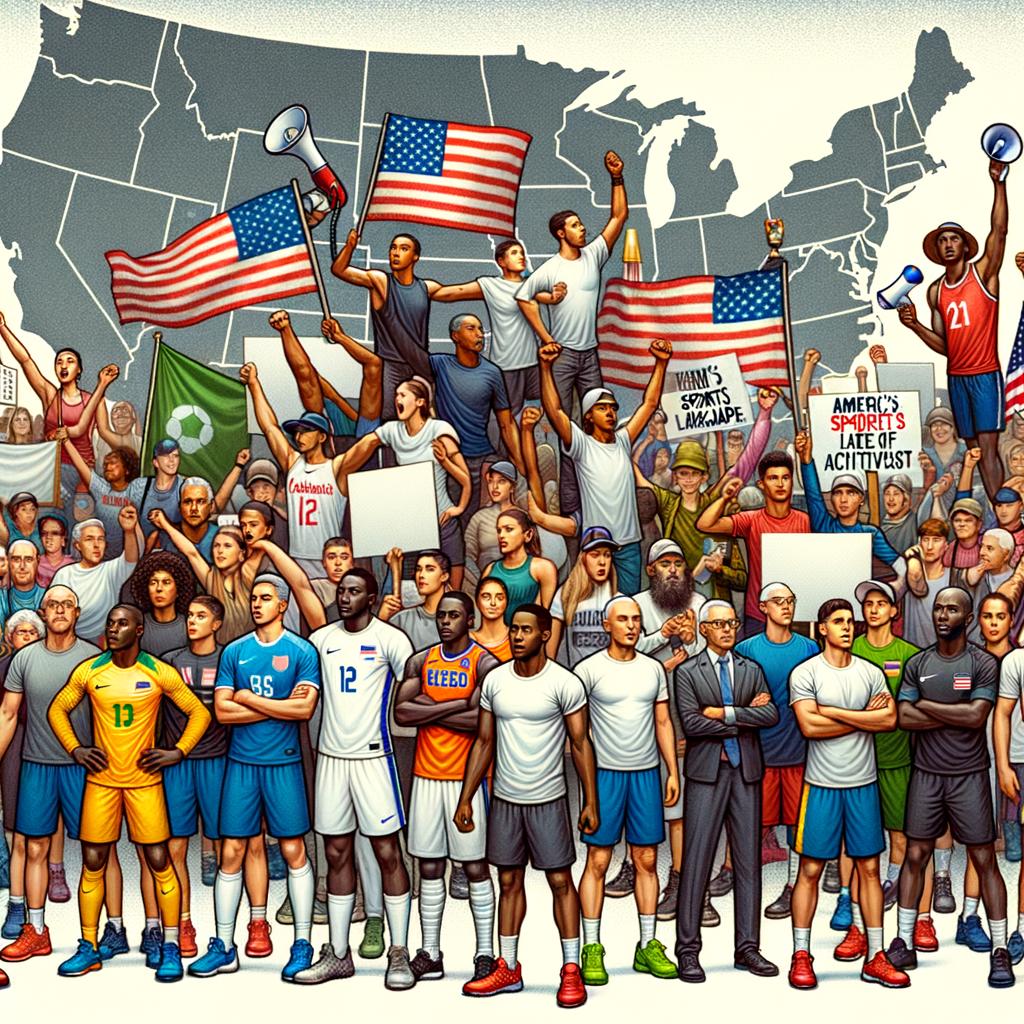Introduction: America’s Sports Landscape—The Impact of Athlete Activism
In recent years, the intersection of sports and social justice has transformed America’s athletic arenas into dynamic platforms for change. From the NBA to the NFL, athletes have increasingly stepped beyond the boundaries of their respective sports to address pressing societal issues, advocating for equality, and shining a spotlight on systemic injustices. This wave of athlete activism is not merely a trend; it represents a fundamental shift in how sports figures engage with the world around them. As symbols of hope and catalysts for conversation, athletes are leveraging their influence to inspire dialogue and action, challenging the status quo in ways that resonate far beyond the playing field. In this article, we will explore how athlete activism is reshaping America’s sports landscape, its impact on fans, communities, and the very fabric of the sports industry, and why this movement is vital for fostering a more equitable society. Through the lens of recent events and ongoing initiatives, we will illustrate the profound role that sports can play in the fight for justice, urging readers to consider the responsibility that comes with greatness and the potential for lasting change that lies in the hands of those who dominate our courts and fields.
In recent years, the realm of sports in America has been profoundly influenced by athlete activism, which has evolved into a powerful catalyst for social change. Athletes wield significant public platforms, and their advocacy not only raises awareness but also addresses pressing issues such as racial injustice, mental health, and environmental sustainability. This movement has encouraged organizations to adopt more inclusive policies, engage with communities, and support initiatives that align with these athletes’ visions for a better society. To effectively harness this momentum, athletes and sports organizations must implement strategies that resonate with their audiences and reflect genuine commitment to the causes they champion.
Key strategies for maximizing the impact of athlete activism include:
- Collaborative partnerships: Building alliances with social organizations amplifies the message and fosters unity.
- Community engagement: Initiatives that involve players directly in grassroots efforts can create tangible change.
- Leveraging social media: Utilizing platforms to engage younger audiences enhances awareness and catalyzes action.
- Transparency: Showing accountability and sustainability in actions improves trust and credibility.
Moreover, professional leagues can further support this movement by establishing policies that endorse and protect players’ rights to express their views without fear of repercussion. The integration of social justice initiatives into team cultures and league programs presents a promising opportunity to sustain long-term impact. By embracing a culture of activism, sports organizations do more than simply support their athletes; they position themselves as pivotal players in the societal dialogue, championing the very essence of what it means to thrive in a diverse America.
| Benefits of Athlete Activism | Examples |
|---|---|
| Promotes Awareness | Campaigns for racial equality and mental health awareness |
| Empowers Communities | Local outreach initiatives and youth mentorship programs |
| Enhances Team Unity | Collective social justice statements from teams |
The Conclusion
As we reflect on the evolving sports landscape in America, it’s clear that athlete activism has transcended the boundaries of the playing field, reshaping the dialogue around social justice, equality, and community engagement. The voices of athletes, once predominantly heard through their performances, now echo powerfully in discussions that challenge societal norms and inspire collective action. This shift is not merely a trend; it represents a profound change in how sports intersect with culture and politics.
As fans, organizations, and policymakers navigate this new paradigm, it is crucial to recognize the responsibility that comes with athletic prominence. The actions of athletes can galvanize movements and elevate critical issues to national attention, urging us all to engage in important conversations. Whether it’s advocating for racial justice, mental health awareness, or environmental sustainability, the impact of these champions extends far beyond their sports.
embracing and supporting athlete activism is not just about applauding their courage; it’s about fostering an environment where athletes feel empowered to advocate for change. As we witness this ongoing evolution, let us also consider our own roles as spectators and supporters—how we respond to and engage with these actions will shape the future of sports and society alike. Ultimately, the call to action is clear: now more than ever, we must listen, learn, and stand beside our athletes as they strive to create a more equitable and just world. In doing so, we all become active participants in this important movement, paving the way for progress both on and off the field.

Leave a Reply